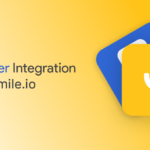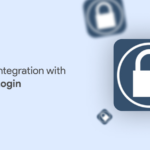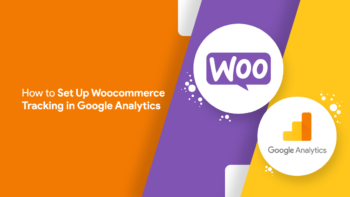The most lucrative aspect of your eCommerce business is upselling. They typically make up the bulk of your company’s income. It basically increases your revenue without having to find new consumers by encouraging your present customers to buy a better product.
Upselling for your online store is crucial for:
- Maintaining a continuous stream of income for your company.
- Retaining customers so they buy from your brand regularly.
- Engage additional customers.
- Establish a long-lasting relationship with your clients.
Upselling is successful because it is simpler to market to existing clients than to new prospects. You see, a lot of business owners put excessive effort into attracting new clients without realising that their existing clientele generates the majority of their income.
If you’re not one of those people, continue reading since this piece will discuss the fundamentals of upselling for ecommerce stores and how Appmaker helps adapt for upseeling with its partner.
Upselling: What is it?
Upselling entails presenting the buyer with a superior, more useful goods just before (or even after) they make a purchase. This will encourage buyers to purchase your best item and raise the average order value.
While offering more features and value, upsells are frequently more expensive. To receive a better value for their money is the fundamental motivation behind your consumers’ purchases.
Upselling: Benefits For Your Ecommerce
Upselling wouldn’t be such a good approach at all without its advantages. The purpose of the upsell, as previously stated, is to assist your clients in making better purchasing decisions; hence, there are invariably advantages.
- Increased sales revenue for you.
- Giving them a customized purchasing experience.
- Establishing a relationship as soon as possible and increasing client retention.
- Enhancing the positive reputation of your brand.
One thing endures: in order for it to succeed, you must execute it flawlessly. Just because you tried upselling doesn’t mean your revenue would suddenly increase.
How to upsell: things to keep in mind
To maximise the effectiveness of your initiatives, you should learn the best practises for upselling.
Employ Ecommerce Upselling Tools
Even if you are a coder, it is more efficient to employ upselling tools that are already in existence because it will frequently cost less time and money to install a ready-to-use product. An upselling tool simply allows you to generate upsell and cross-sell offers and include them in emails, product pages, and cart pages.
Additionally, they are able to offer customers hyper-personalized recommendations based on their activity and purchasing patterns, which is essentially impossible to do manually at scale.
After choosing a tool, you can begin planning your upsell strategy and how to carry them out.
Divide Your Products Into Various Channels
Customers are urged to upgrade to a higher tier by upselling. And in order to do that, you must classify your entire catalogue into various price points, capacities, or powers. One excellent example of this are laptops. Imagine you want to upsell consumers on a high-end equipment.
There are numerous ways to classify them, including:
- Laptop computers for usage at school or the workplace.
- Family-friendly laptops with low specs.
- Gaming laptops in the mid-range for casual use.
- High-end laptops for devoted designers, developers, or gamers.
- Apple users can use MacBooks.
Always expect to pay more for a higher tier. Your objective is to persuade potential customers that buying more would result in lower costs.
Decide which channels to use for your upsells
Knowing which products to upsell is now possible. Choose the location where the upsells will be offered. Where you put them will directly affect how successful you are. Your strategy for trying to sell your offer will be heavily influenced by whether your customer has already made a purchase, has added products to their basket, or is simply exploring your catalogues.
The following are the greatest places to add offers:
- When your prospect is going to check out on the cart page.
- When users are searching for the greatest offer on product sites.
- Emails with offers and suggestions for products based on their past purchases. You can send these emails to the client several weeks or even months after the sale.
- Out-of-stock product pages. Therefore, you can guide your prospects toward a more worthwhile purchase rather than disappointing them.
At all costs, stay away from including your upsells on pages like the homepage, registration, or adverts that are early in the consumer journey. Only present upsells to customers who are already considering purchasing.
Be straightforward and private
One highly relevant product can be upsold more successfully than 10 products that merely fall under one category. Making your recommendations feel like they were developed for your customers rather than just trying to get their money is why personalising your upsells is so important.
If you don’t, they’ll become frustrated and overwhelmed and leave your site again. In comparison to the item you’re attempting to replace. Your upsell must either have:
- Improved features For instance, greater capacity, more choices, superior materials, and better use cases.
- More accolades and favourable comments.
- Restricted sale or stock.
- Come packaged with additional accessories and supplementary things.
Free delivery, a 30-day money-back guarantee, or AfterPay as a method of payment. Your upsell offer’s perceived value must be noticeably greater than that of the base item. Your buyer would feel awful for passing it up because it is so valuable.
Prioritize recurring customers
Selling to an existing customer is five times simpler than finding a new one. The explanation is straightforward: new customers don’t trust you enough to place a large order with you at a high price.
On the other hand, your present clients already have confidence in your brand and aren’t hesitant to spend more money if their prior interactions with you were positive. This type of confidence is lacking in new prospects.
Therefore, to get the most out of your upsells, be careful not to overburden your new prospects with pressure or you risk losing them.
Appmaker integration with Code Black Belt: Frequently bought together
The potential to establish upsell/cross-sell campaigns has never been simpler thanks to app developers and platforms like Shopify. You may easily look for a programme that is lined up to accomplish this job for you rather than spending hundreds of hours (and money) on a developer, Appmaker just so happen to have integrated with Code Black Belt: Frequently bought together.
About Code Black Belt: Frequently bought together
The clever upsell functionality is brought into Shopify eCommerce mobile app by the Frequently Bought Together app in the most practical way possible: you can get your store ready for it in a matter of seconds with no configuration.
How does it function?
Through data mining algorithms, Frequently Bought Together analyses past purchases in your store’s database and creates a memory graph with the suggested goods that are typically added together to the shopping cart.
A bundle of similar products is shown when a customer visits a product page. The first app to integrate this Amazon-like feature into Shopify was Frequenlty Bought Together. For the most common Shopify themes, the styles are automatically adjusted. Additionally, we thoroughly review your installation to make sure everything fits seamlessly with your theme.










No Comments
Leave a comment Cancel